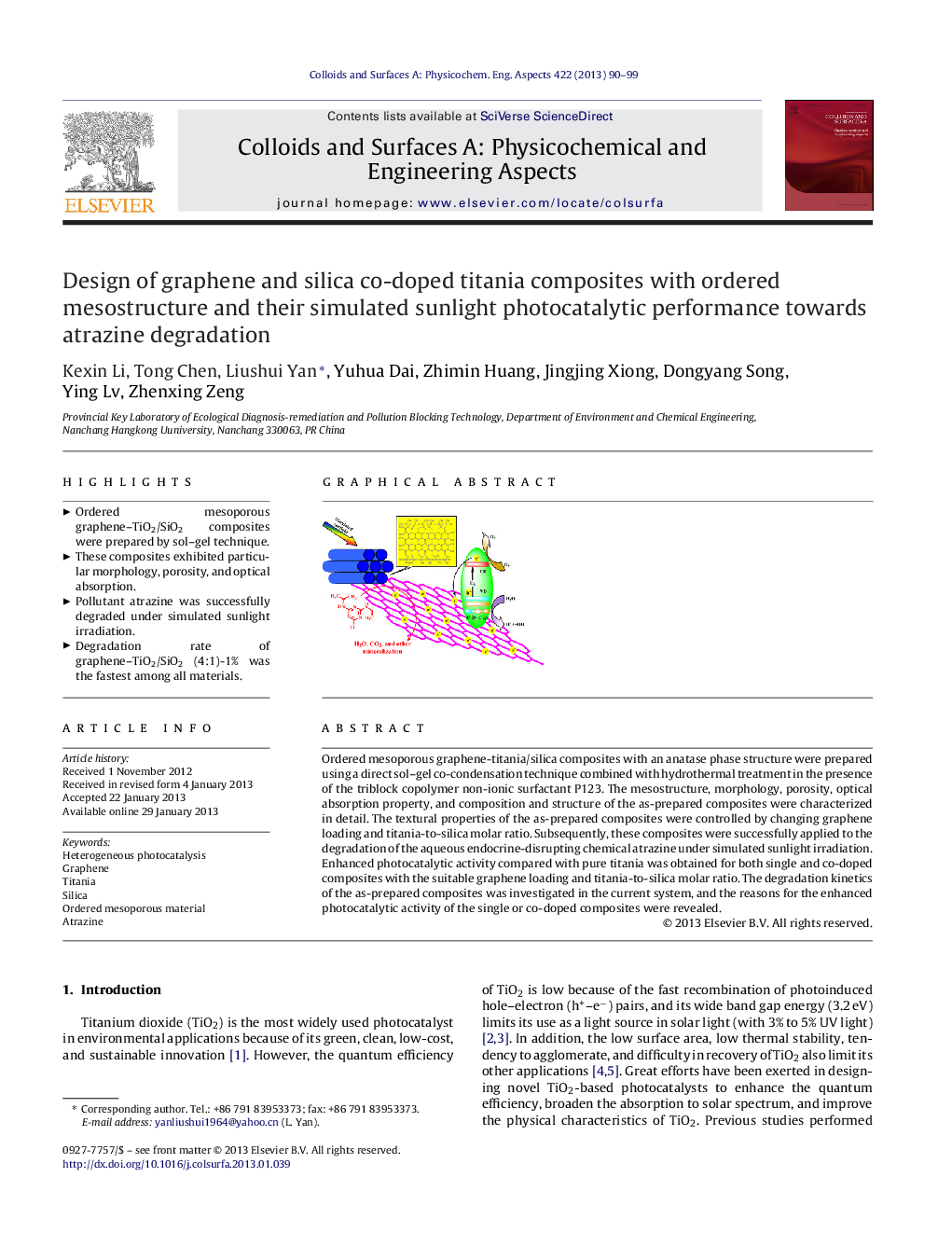| Article ID | Journal | Published Year | Pages | File Type |
|---|---|---|---|---|
| 593673 | Colloids and Surfaces A: Physicochemical and Engineering Aspects | 2013 | 10 Pages |
Ordered mesoporous graphene-titania/silica composites with an anatase phase structure were prepared using a direct sol–gel co-condensation technique combined with hydrothermal treatment in the presence of the triblock copolymer non-ionic surfactant P123. The mesostructure, morphology, porosity, optical absorption property, and composition and structure of the as-prepared composites were characterized in detail. The textural properties of the as-prepared composites were controlled by changing graphene loading and titania-to-silica molar ratio. Subsequently, these composites were successfully applied to the degradation of the aqueous endocrine-disrupting chemical atrazine under simulated sunlight irradiation. Enhanced photocatalytic activity compared with pure titania was obtained for both single and co-doped composites with the suitable graphene loading and titania-to-silica molar ratio. The degradation kinetics of the as-prepared composites was investigated in the current system, and the reasons for the enhanced photocatalytic activity of the single or co-doped composites were revealed.
Graphical abstractFigure optionsDownload full-size imageDownload as PowerPoint slideHighlights► Ordered mesoporous graphene–TiO2/SiO2 composites were prepared by sol–gel technique. ► These composites exhibited particular morphology, porosity, and optical absorption. ► Pollutant atrazine was successfully degraded under simulated sunlight irradiation. ► Degradation rate of graphene–TiO2/SiO2 (4:1)-1% was the fastest among all materials.
